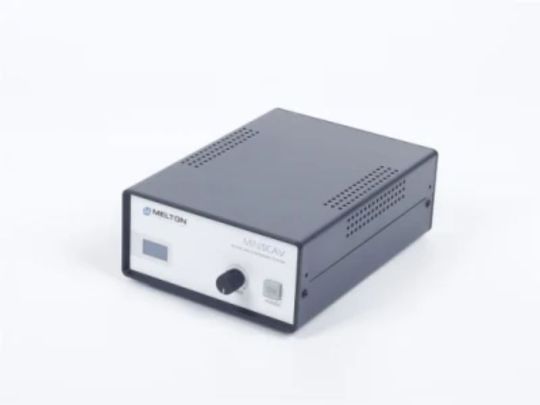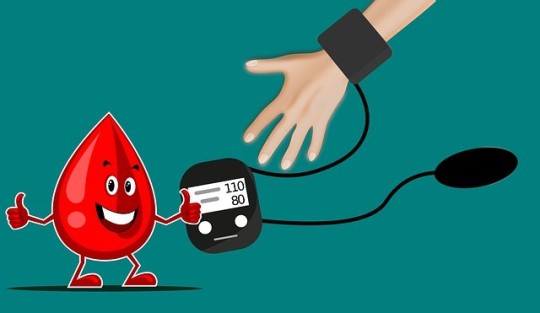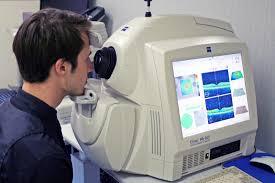Don't wanna be here? Send us removal request.
Text
Amyotrophic Lateral Sclerosis Treatment Market will grow at highest pace owing to rising R&D activities

Amyotrophic Lateral Sclerosis, also known as ALS or Lou Gehrig's disease, is a progressive neurodegenerative disease that affects nerve cells in the brain and spinal cord. The motor neurons start dying and lose their ability to trigger specific muscles, leading to weakness, paralysis, and inability to speak, swallow, and breathe without assistance. Currently, there is no cure for ALS and the medications available can only reduce symptoms and improve quality of life.
The Global Amyotrophic Lateral Sclerosis Treatment Market is estimated to be valued at US$ 692.77 Mn in 2024 and is expected to exhibit a CAGR of 4.6% over the forecast period 2023 to 2030. Key Takeaways Key players operating in the Amyotrophic Lateral Sclerosis Treatment are Orion Corporation, Bausch Health Companies Inc., CYTOKINETICS, INC., Aquestive Therapeutics, Inc., Sanofi ,Covis Pharma, Sun Pharmaceuticals Industries Ltd, Mitsubishi Tanabe Pharma Corporation, BrainStorm Cell Limited, ViroMed Co., Ltd, Ionis Pharmaceuticals, Genervon Biopharmaceuticals, LLC, Biogen, Orphazyme A/S, Apotex Inc, Neuralstem, Inc., Implicit Bioscience, F. Hoffmann-La Roche Ltd, AB Science, ADVANZ PHARMA. The growing awareness about ALS and increasing R&D spending for developing new treatments is driving the market growth. Various biotechnology and pharmaceutical companies are conducting clinical trials to evaluate new treatment targets and develop effective drugs. Advancements in cell and gene therapies hold promise for treating ALS in the near future. Market Trends and Opportunities Stem cell therapy is emerging as a potential treatment avenue for ALS. Numerous clinical trials are evaluating the safety and efficacy of mesenchymal stem cells in slowing disease progression and extending lifespan. Gene therapy is another innovative approach being explored. Viral vectors are used to deliver neurotrophic factors or modify genetic mutations causing familial ALS. Editing stem cells to correct disease-causing genes before transplantation can also be beneficial. With continued research, stem cell and gene therapies may yield cure for ALS in the long run. Supportive care technologies like exoskeletons and computer systems controlled by eye movements are helping patients maintain independence for longer durations. Wearable sensors and digital platforms for remote monitoring also offer conveniences to families and caregivers. Such assistive solutions present commercial opportunities in the coming years. Overall, the market is poised for steady growth as R&D efforts focus on advanced treatment strategies.
#Amyotrophic Lateral Sclerosis Treatment Market Share#Amyotrophic Lateral Sclerosis Treatment Market Growth#Amyotrophic Lateral Sclerosis Treatment Market Analysis
0 notes
Text
Anesthesia Gas Scavenging System Market set to grow at highest pace owing to rising concerns regarding healthcare-associated infections

The anesthesia gas scavenging system is used to collect and filter waste anesthetic gases from patient breathing circuits during general anesthesia procedures. The system provides safe disposal of waste anesthetic gases and vapor, helps in maintaining a clean air environment in the operating room, and prevents pollution. Advantages such as reduced risks of pollution and healthcare-associated infections are driving the demand for anesthesia gas scavenging systems. The system comes equipped with filters to trap and neutralize chemical vapors before venting traces of waste gases to the outside atmosphere. The Global Anesthesia Gas Scavenging System Market is estimated to be valued at US$ 8484.9 Mn in 2024 and is expected to exhibit a CAGR of 9.2% over the forecast period 2023 to 2030. Key Takeaways Key players: Key players operating in the anesthesia gas scavenging system market are INVISTA, Asahi Kasei Corporation, Hyosung Corporation, Zhejiang Huafon Spandex Co. Ltd., Yantai Tayho Advanced Materials Co. Ltd., Indorama Industries Ltd, TK Chemical Corp., Taekwang Industrial Co., Ltd, Jiangsu Shaungliang Spandex Co., Ltd., and Xiamen Lilong Spandex Co. Ltd. Growing demand: Growing number of surgical procedures performed worldwide coupled with rising concerns regarding pollution and healthcare-associated infections is fueling the demand for anesthesia gas scavenging systems. Technological advancement: Leading manufacturers are focusing on development of innovative and portable anesthesia gas scavenging systems integrated with advanced filtration technology to offer maximum protection. Market Trends Portable systems: There is rising demand for portable anesthesia gas scavenging systems that can be easily moved between operating rooms. This is attributed to growing number of ambulatory surgical centers performing short surgical procedures. Sustainable filtration: Key players are investing in research & development activities to introduce sustainable and reusable filtration systems for anesthesia gas scavenging. This helps in reducing operational costs and manual handling of biowaste in the long run. Market Opportunities Emerging markets: Emerging regions such as Asia Pacific and Latin America offer lucrative opportunities for players owing to growing healthcare infrastructure and increasing medical tourism in these regions.
#Anesthesia Gas Scavenging System Market Share#Anesthesia Gas Scavenging System Market Trend#Anesthesia Gas Scavenging System Market Analysis
0 notes
Text
Biosimilar Pipeline Analysis Market will grow at highest pace owing to increasing opportunity in oncology segment.

Biosimilar pipeline analysis refers to the development and evaluation of biopharmaceutical products that are similar to already approved biological drugs (reference products). Biosimilars demonstrate similarity in physicochemical characteristics, efficacy, safety and immunogenicity with the reference biologic drug. The development of biosimilars helps increase patient access and lowers health care costs. Key product types in the biosimilar pipeline include monoclonal antibodies, recombinant hormones/ growth factors, glycopeptides and peptides. Biosimilars offer clinical effectiveness comparable to reference products at a lower cost, thereby benefitting patients and public health systems. The Global Biosimilar Pipeline Analysis Market is estimated to be valued at US$ 29.4 Bn in 2024 and is expected to exhibit a CAGR of 17% over the forecast period 2023 to 2030. Key Takeaways Key players operating in the Biosimilar Pipeline Analysis are Pfizer Inc. (AC. Hospira). Pfizer is a leading player with a strong pipeline of oncology and anti-inflammatory biosimilars. Oncology is the largest application segment in the biosimilar pipeline market. Many biologic drugs facing patent expiry in oncology offer significant commercial opportunities for biosimilar developers. Increased incidence of cancer worldwide is also propelling demand. Technological advancements such as monoclonal antibody engineering, automation of mammalian cell culture processes and analytical characterization methods have improved the speed and success rate of biosimilar development. Advanced analytics aid in more accurate profiling and higher similarity assessment of biosimilar candidates. Market Trends Emerging markets in Asia Pacific and Latin America offer lucrative growth opportunities for biosimilar developers due to their large patient populations and growing healthcare budgets. Countries like China, India, Brazil and Mexico are actively working to expand patient access to affordable biologics through biosimilars. Biosimilar approval pathways are evolving to strategic partnerships between originators and biosimilar companies. Collaboration models such as licensing agreements are gaining precedence over antagonistic approaches and patent litigation, facilitating timely market entry of affordable biosimilars. Market Opportunities Increased penetration of biosimilars for anti-TNF drugs to treat autoimmune diseases like rheumatoid arthritis and inflammatory bowel disease. Biosimilars of anti-TNF biologics enjoy highest success rates and market adoption. Strong pipeline of oncology biosimilars facing patent expiry over 2023-2030 including bevacizumab, trastuzumab, rituximab, which could realize combined global sales potential exceeding US$25 billion.
#Biosimilar Pipeline Analysis Market Share#Biosimilar Pipeline Analysis Market Analysis#Biosimilar Pipeline Analysis Market Growth
0 notes
Text
Animal Genetics Market Share, Animal Genetics Market Trend, Animal Genetics Market Size

The animal genetics market plays a vital role in improving animal health and productivity to meet the growing global demand for animal protein from meat, milk and eggs. Animal genetics involve technologies and processes that allow for the genetic improvement of commercially important livestock species including cattle, poultry, swine and aquaculture. Genetic testing helps farmers select breeding stock with desirable traits like increased growth rate and feed efficiency, while DNA testing is used for parentage verification, genetic disease diagnosis and residue avoidance. The increasing focus on consumption of high quality, safe and affordable animal protein to feed the world's burgeoning population is a key driver of the animal genetics space. The global animal genetics market is estimated to be valued at US$ 6.6 Bn in 2024 and is expected to exhibit a CAGR of 7.4% over the forecast period 2023 to 2030. \ Key Takeaways Key players: Key players operating in the animal genetics market include BS Global (US), Groupe Grimaud (France), Zoetis (US), Hendrix Genetics (Netherlands), Topigs Norsvin (Netherlands), CRV Holding (Netherlands), and Neogen (US).
Key players focus on strategic acquisition and collaborations to expand in emerging markets. For instance, Zoetis acquired Phoenix Lab in 2021 to enhance its diagnostics capabilities in breeding stock. Growing demand: Rising consumption of protein-rich diets in developing nations is propelling demand for high yield animal breeds. Genetic testing helps improve fertility and production efficiency on farms. Technological advancements: New genetic techniques like genomic selection and gene editing are helping accelerate genetic progress. Meanwhile, artificial insemination has increased scale and quality of production. Market Trends Precision livestock farming: Adoption of technologies like RFID, sensors and big data are advancing precision livestock farming for optimized management. This trend supports sustainability and genetic improvements. Alternative proteins: Cultivated meat and plant-based offerings pose competition by addressing ethical and environmental issues. However, animal genetics will still play a key role in transition to sustainable animal agriculture. Market Opportunities Emerging market expansion: Latin America, Middle East and Southeast Asia present lucrative opportunities for animal genetics firms to tap rising protein demand through partnerships and acquisitions. Diversification: Companies are widening their portfolios from cattle and swine to serve poultry, aquaculture and other emerging sectors through new product pipelines and service offerings. Vaccines and diagnostic tools segment will grow steadily.
0 notes
Text
Growing Antibody-Drug Conjugates Market Owing to Rising Demand for Targeted Cancer Therapy.

Antibody-drug conjugates (ADCs) are a type of bioconjugate consisting of monoclonal antibodies that are attached by chemical linkers to highly potent anti-cancer payloads. ADCs selectively target antigens that are highly expressed on tumor cells while sparing normal tissues through the use of antibodies. Linkers attached between the antibody and cytotoxic drug allow for the drug to be delivered unchanged until it reaches the intended tumor site, minimizing harm to healthy cells. ADCs have demonstrated clinical efficacy in treating various cancers including lymphoid malignancies, breast cancer, and solid tumors.
The Global Antibody-Drug Conjugates Market is estimated to be valued at US$ 5.38 Bn in 2024 and is expected to exhibit a CAGR of 14% over the forecast period 2023 to 2030. Key Takeaways: Key players operating in the Antibody-Drug Conjugates are AstraZeneca PLC, Daiichi Sankyo Company, Limited, Novasep, ADC Therapeutics SA, Alentis Therapeutics AG, F. Hoffmann-La Roche, Gilead Sciences, Inc., AbbVie Inc., Biosion USA, Inc., Astellas Pharma Inc., Duality Biologics (Suzhou) Co. Ltd., BioNTech SE, LaNova Medicines Ltd., Bliss Biopharmaceutical, Eisai Co., Ltd., ProfoundBio, Pfizer, Inc., ImmunoGen Inc., Mersana Therapeutics Inc., Sorrento Therapeutics Inc., Oxford BioTherapeutics Ltd, and Takeda Pharmaceutical Company Ltd. Growing demand for targeted cancer therapy with minimal side effects is expected to drive significant growth of the ADC market over the forecast period. Additionally, ongoing technological advancements in linker chemistry, increasing pipeline products and approvals are further fueling the market growth. Market Trends: The ADC market is witnessing increasing adoption of cleavable linkers that are stable in circulation but rapidly release the drug payload intracellularly upon internalization into target tumor cells. Additionally, the development of novel conjugation technologies such as DBCO-azide click chemistry is allowing for site-specific conjugation without effect on bioactivity and efficacy of ADCs. Market Opportunities: The significant opportunities in the ADC market are in developing ADCs for liquid and solid tumor indications with unmet medical needs. Additionally, optimization of physiochemical properties of molecules to improve pharmacokinetics is another key area that ADC developers are increasingly focusing on to enhance therapeutic index and efficacy of ADCs.
#Antibody Drug Conjugates Market Share#Antibody Drug Conjugates Market Growth#Antibody Drug Conjugates Market Analysis
0 notes
Text
Blood Collection Devices Market will grow at highest pace owing to increase in number of blood donation procedures

Blood collection devices are medical instruments that are used for collecting blood samples from humans or animals in clinical settings. These devices make blood collection safer and easier for both healthcare professionals and patients. Devices such as needles, lancets, syringes, and blood collection tubes are key components used to draw blood samples. Continuous growth in number of blood donation procedures worldwide has augmented demand for blood collection devices. Increase in prevalence of blood disorders such as anemia, leukemia, and hemophilia is also fueling market growth. The demand for safe blood samples collection methods in diagnostic laboratories is further boosting adoption of blood collection devices. Rising healthcare expenditure in developing nations provides new opportunities to market players.
The Global Blood Collection Devices Market is estimated to be valued at US$ 9,244.72 Mn in 2024 and is expected to exhibit a CAGR of 6.1% over the forecast period 2023 to 2030. Key Takeaways Key players operating in the blood collection devices are Becton Dickinson and Co, Terumo Corp, Cardinal Health Inc, SARSTEDT AG & Co KG, Nipro Corp, Thermo Fisher Scientific Inc, Sekisui Chemical Co Ltd, Greiner Bio-One International GmbH, FL Medical SRL, and IntervacTechnology OU. These established players dominate the market owing to their robust product portfolio and global distribution network. The demand for blood collection devices is growing significantly owing increasing number of blood donations and rising prevalence of chronic diseases. As per WHO, around 122.6 million blood donations are collected globally each year from voluntary unpaid donors for helping patients in need of transfusion. Technological advancements in blood collection devices such as development of needle free collection methods, vacuum collection systems and automated blood collection systems are supporting market growth. These innovations aid in improving safety, efficacy and ease of blood sample collection procedures. Market Trends Growing preference for needle-free blood collection methods - Technological advancements have led to development of needle free blood collection systems such as lancet-integrated microfluidic system that can collect capillary blood samples in a minimally invasive way. This reduces pain and risk of injuries associated with traditional needles. Increasing demand for automated blood collection systems - Fully automated blood collection systems with features such as volume detection, needle retraction and sample labeling are gaining prominence. These automated solutions improve workflow efficiency of blood banks and diagnostic centers. Rising focus on personalized healthcare - Tailored diagnostics requiring specific blood biomarkers is generating need for new biomarkers assessment platforms that can analyze blood samples to deliver personalized healthcare programs and treatment decisions. This acts as a driver for high-tech blood collection devices. Market Opportunities Growing demand in developing markets - Emerging economies in Asia Pacific and Latin America with large patient pools and increasing healthcare spending present significant opportunities. Favorable regulatory environment and low manufacturing costs also attract players. Integration of IoT capabilities - Opportunities exist for players to develop "smart" blood collection devices integrated with Internet of Things (IoT) for applications such as real-time monitoring and predictive maintenance of blood storage equipment.
#Blood Collection Devices Market Growth#Blood Collection Devices Market Trend#Blood Collection Devices Market Share
0 notes
Text
The Blood Flow Measurement Devices Market Poised to Register a CAGR of 8.8% Due to Increasing Prevalence of Cardiovascular Diseases

Blood flow measurement devices are used to measure blood flow in arteries, veins and microcirculation at the level of skin and organs. Such devices help detect vascular problems, assess the effectiveness of surgical interventions and monitor clinical procedures. Blood flow measurement is crucial in the diagnosis and management of various cardiovascular diseases including atherosclerosis, peripheral arterial disease and heart failure. The growing burden of cardiovascular diseases worldwide has increased the demand for reliable devices to measure blood flow parameters. The global blood flow measurement devices market is estimated to be valued at US$ 639.5 million in 2024 and is expected to exhibit a CAGR of 8.8% over the forecast period of 2023 to 2030.
Rising geriatric population, unhealthy lifestyle habits and increasing rate of obesity are major factors contributing to the growing prevalence of cardiovascular diseases globally. Further, technological advancements have enabled development of non-invasive and portable blood flow measurement devices with high accuracy. This is expected to boost market growth during the forecast period. Key Takeaways Key players operating in the blood flow measurement devices market are Arjo, Atys Medical, Compumedics Ltd., Cook Medical Inc., Deltex Medical Ltd., GF Health Products, Inc., Medistim ASA, Moor Instruments Ltd., Perimed AB, Transonic Systems, Inc., Medtronics, Biomedix Inc, AKW Medicals Inc., D E Hokanson Inc., Elcat GmBH, Flowtronics Inc., Ace Medicals, Carolina Medical Plc, and Compumedics Ltd. These players are focusing on new product launches and strategic collaborations to strengthen their market position. The growing prevalence of cardiovascular diseases and diabetes has increased the demand for blood flow measurement devices for diagnostic and therapeutic applications. Various clinical studies have demonstrated the effectiveness of these devices in evaluating vascular disease and peripheral artery disease. This is expected to propel market growth during the forecast period. Technological advancements have enabled the development of non-invasive and portable blood flow measurement devices with advanced features such as Doppler imaging, thermal sensing and laser techniques. Wearable blood flow sensors are also gaining popularity owing to their continuous monitoring capability. This is likely to drive the adoption of new and advanced blood flow measurement devices. Market Trends Increased Adoption of Non-invasive Devices: Non-invasive blood flow measurement devices that do not require an incision are increasingly becoming popular. Devices based on techniques such as ultrasound, laser Doppler and photoplethysmography offer convenient alternatives to invasive procedures. This is a major trend in the market. Focus on Wearable and Home-use Models: Market players are investing in the development of lightweight, wearable blood flow measurement devices for continuous home monitoring. Such devices are easier to use and help improve patient compliance. The emergence of wearables and home-use models is expected to disrupt the market positively in the coming years. Market Opportunities Emerging Markets: Emerging countries in Asia Pacific, Latin America, Africa and the Middle East are expected to provide ample growth opportunities for players in the blood flow measurement devices market. Increasing healthcare expenditures and rising awareness about cardiovascular disorders will drive the demand. Integration of AI and IoT: Integration of artificial intelligence, machine learning and internet of things capabilities can help optimize the performance of blood flow measurement devices. Continuous remote monitoring solutions enabled by AI and IoT pose lucrative opportunities.
#Blood Flow Measurement Devices Market Share#Blood Flow Measurement Devices Market Trend#Blood Flow Measurement Devices Market Analysis
0 notes
Text
Antimicrobial Therapeutics Market will grow at highest pace owing to Rising Prevalence of Chronic Diseases

The global Antimicrobial Therapeutics market offers a wide range of drugs and therapies used for the treatment of infectious diseases caused by various microorganisms such as bacteria, virus, fungi and parasites. Antimicrobial drugs play a vital role in treating life-threatening infections like pneumonia, tuberculosis, HIV, and hospital-acquired infections. They are used as anti-bacterial, anti-fungal, anti-viral and anti-parasitic agents in various therapeutic areas including respiratory infections, hospital-acquired infections, ENT infections and skin infections. Rising prevalence of chronic and infectious diseases worldwide owing to unhealthy lifestyle practices and lack of sanitation in many developing nations is driving the growth of the antimicrobial therapeutics market.
The Global Antimicrobial Therapeutics Market is estimated to be valued at US$ 219.80 Bn in 2024 and is expected to exhibit a CAGR of 4.8% over the forecast period 2023 to 2030. Key Takeaways Key players operating in the Antimicrobial Therapeutics market are Pfizer Inc., Johnson & Johnson, GlaxoSmithKline plc, Merck & Co., Novartis AG, Roche Holding AG, AstraZeneca plc, Sanofi SA, Bayer AG, Bristol Myers Squibb Company, Eli Lilly and Company, Gilead Sciences, Inc., AbbVie Inc., Allergan plc, Mylan N.V. Major players are focusing on R&D initiatives for development of novel drug formulations with enhanced efficacy against drug-resistant microbial strains. Rising prevalence of chronic medical conditions like diabetes, cancer, and respiratory disorders leading to increased risk of infections is a key factor driving the demand for antimicrobial therapeutics. According to the WHO, chronic diseases accounted for 70% of global deaths in 2020. Advancements in drug delivery technologies are allowing development of effective compounds with less toxicity for treatment of complex and multi-drug resistant infections. This includes development of long-acting parenteral and oral formulations. Market Trends Increasing R&D efforts for development of new antibacterial drugs: Significant drug resistance among bacterial pathogens has heightened the need for novel drugs. This is encouraging large investments in R&D for new classes of antibiotics. Focus on combination therapies: Combining two or more existing antimicrobials is emerging as a promising strategy to fight multidrug resistant pathogens. This minimizes the risk of generating resistance. Rise in M&A and partnership activities: Companies are actively pursuing acquisition and partnership routes to augment their product pipelines and technology platforms in this space. Market Opportunities Untapped emerging markets: Majority of future growth is expected from developing Asian, Latin American and African countries owing to improving access to healthcare and rising healthcare spending in these regions. Pediatric antimicrobials: There is growing demand for pediatric formulations given current drugs are predominantly adult-dosage medications. This presents new product development opportunities. Increasing investments towards antimicrobial stewardship programs: Such programs aimed at optimal use of antibiotics and guiding physicians on resistance issues present new revenue streams for players.
#Antimicrobial Therapeutics Market Share#Antimicrobial Therapeutics Market Trend#Antimicrobial Therapeutics Market Analysis
0 notes
Text
Anti-Neprilysin Market to Grow Significantly due to Rising Prevalence of Chronic Diseases

The anti-neprilysin market comprises products associated with neprilysin inhibition, which is a membrane-bound zinc metalloproteinase enzyme that breaks down natriuretic peptides and other vasoactive peptides. Neprilysin inhibitors function by blocking the neprilysin enzyme and preventing the degradation of endogenous natriuretic peptides, which are vasoactive peptides that lower blood pressure and promote sodium excretion. Neprilysin inhibitors find wide applications in the treatment of cardiovascular diseases such as hypertension, heart failure, and myocardial infarction.
The global anti-neprilysin market is estimated to be valued at US$ 1,263.3 Mn in 2024 and is expected to exhibit a CAGR of 4.6% over the forecast period of 2023 to 2030. Key Takeaways Key players operating in the anti-neprilysin market are BIOPROJET, Novartis AG, Pharmaleads SA, Theravance Biopharm, Cipla Inc, and Oceanic Pharmachem Pvt. Ltd. BIOPROJET, for instance, is developing BIP 302 as an innovative neprilysin inhibitor to treat heart failure and high blood pressure. The increasing prevalence of cardiovascular diseases worldwide is a major factor driving the demand for anti-neprilysin drugs. As per the WHO estimates, cardiovascular diseases account for over 17 million deaths annually across the globe. Technological advancements in drug delivery systems have allowed the development of superior and long-acting neprilysin inhibitor formulations with minimal side-effects. Market Trends One of the key trends in the anti-neprilysin market is the pipeline of new drug candidates under development. Several pharmaceutical companies are conducting extensive R&D to develop novel neprilysin inhibitors with better efficacy and safety profiles. Furthermore, acquiring smaller biotech firms working on neprilysin inhibition has emerged as a popular business strategy adopted by major players to strengthen their product portfolios. Market Opportunities Recent studies revealing the clinical efficacy and safety of combining neprilysin inhibitors with other cardiac drugs present lucrative opportunities. Partnerships and collaborations between drug makers to conduct large-scale clinical trials exploring neprilysin inhibitor combinations can potentially open new application areas. Also, geographical expansion into emerging markets of Asia Pacific and Latin America with growing cardiovascular disease burden offers multi-fold growth opportunities over the next decade.
0 notes
Text
The Bone Densitometers Market will grow at highest pace owing to rising prevalence of osteoporosis

The bone densitometers market comprises devices that utilize X-ray technologies such as dual-energy X-ray absorptiometry (DEXA) and quantitative computed tomography (QCT) to measure bone mineral density (BMD). DEXA is considered the gold standard for clinical diagnosis of osteoporosis and is highly precise for assessing fracture risk. It offers quick and easy scanning to evaluate BMD at the hip and spine. The growing prevalence of osteoporosis due to sedentary lifestyles and aging populations worldwide has significantly driven the demand for bone densitometers for diagnosis and monitoring of the condition.
The Global Bone Densitometers Market is estimated to be valued at US$ 313.05 Mn in 2024 and is expected to exhibit a CAGR of 4.7% over the forecast period 2023 to 2030. Key Takeaways Key players operating in the bone densitometers are GE Healthcare, Hologic, Inc., Swissray Global Healthcare Holding, and BeamMed Ltd. GE Healthcare offers a wide range of DEXA and QCT bone densitometers under the Discovery and Horizon brands. Hologic Inc. provides DEXA systems such as Horizon Wi, Horizon Lumbar Spine, and Horizon Advance that have received FDA clearance. The rising geriatric population suffering from bone-related disorders is a major factor fueling demand. As per the United Nations, by 2050, one in six people in the world will be over age 65. The number of hip fractures globally is projected to rise from 1.7 million in 1990 to 6.3 million by 2050. Technological advancements are allowing greater precision and efficiency. Newer DEXA systems feature enhanced imaging capabilities, automated analysis, and wireless connectivity for data sharing. Osteoporosis screening programs in various countries are also raising awareness about early diagnosis. Market Trends Rising remote diagnosis: There is an increased focus on remote diagnosis of osteoporosis using portable DEXA devices or home-based monitoring systems connected via the internet. This trend is driven by the need for convenient solutions amidst healthcare resource constraints. Growing Asia Pacific market: The Asia Pacific region is witnessing rapid growth in geriatric population and increased prevalence of osteoporosis. This will drive the sales of bone density assessment devices in countries like China and India in the coming years. Market Opportunities Low-cost devices: There is scope for manufacturers to offer more affordable options to expand diagnosis in developing nations and rural areas with limited access currently. Multi-utility platforms: Developing multi-utility devices capable of bone density assessment along with other tests can increase adoption. This integrated approach saves on equipment costs for healthcare facilities. Impact of COVID-19 on Bone Densitometers Market Growth The COVID-19 pandemic has significantly impacted the bone densitometers market. During the initial outbreak, several countries announced complete lockdowns which led to the temporary closure of healthcare facilities including diagnostic centers. This reduced the volume of bone density tests being conducted using bone densitometers, impacting the revenues of market players. With people staying indoors, osteoporosis screening also saw a decline. However, as lockdowns have gradually eased in different parts of the world, the market is witnessing a recovery. There is growing emphasis on preventive healthcare and management of chronic diseases. This has boosted the importance of bone health monitoring. Several healthcare providers are taking necessary safety precautions while conducting bone mineral density tests. Telehealth solutions are also being leveraged to continue serving patients virtually during such crises.
0 notes
Text
Breathalyzers Market will grow at highest pace owing to increasing cases of alcohol related accidents

The breathalyzers market comprises devices that aid in analysis of alcohol levels in human breath. Breathalyzers find extensive applications in measuring blood alcohol concentration (BAC) levels in suspected drunk driving cases. These devices are considered reliable and easy-to-use tools for determining intoxication levels. The advantages of breathalyzers over blood tests include non-invasiveness, rapid results, and ease of use at the roadside. The growing occurrences of alcohol-related accidents worldwide have amplified the need for reliable breathalyzers for efficient prevention of drunk driving. Moreover, strict drunk driving laws with breathalyzer tests mandated have further propelled their demand.
The Global Breathalyzers Market is estimated to be valued at US$ 10.6 Bn in 2024 and is expected to exhibit a CAGR of 18.% over the forecast period 2023 to 2030. Key Takeaways Key players operating in the Breathalyzers market are Cannabix Technologies Inc., Alcohol Countermeasure Systems Corp., Dragerwerk AG & Co. KGa, Intoximeters Inc., Lifeloc Technologies Inc., MPD Inc., Quest Products Inc., Advanced Safety Devices LLC, Aerocrine AB, Akers Biosciences Inc., Alcolizer Pty Ltd., Alcopro Inc., Guth Laboratories Inc., Meretek Diagnostics Group of Otsuka America Pharmaceutical Inc., PAS Systems International Alcohol Sensor Systems, Toshiba Medical Systems Corp., TruTouch Technologies Inc., ENVITE- WISMER GmbH, AK GlobalTech Corporation, Intoximeter Inc., and BACtrack Inc. The rising alcoholism and increasing cases of drunk driving have been fueling the need for efficient breathalyzers. Technological advancements including portable breathalyzers, fuel cell sensors, semiconductor oxide sensors are enabling accurate, rapid and reliable alcohol detection. The stringent laws against drunk driving coupled with increasing awareness about alcohol hazards are compelling more individuals to rely on breathalyzers. Technological advancements have led to the development of portable breathalyzers that provide on-the-spot results conveniently. Sensors based on fuel cell and semiconductor oxide technologies offer accurate, rapid alcohol detection. Bluetooth and wireless connectivity in advanced devices enable remote data transmission with automatic recording of test results. AI and IoT integrations also aid in centralized breathalyzer data management. Market trends The adoption of portable breathalyzers is growing owing to increasing demand for on-the-spot alcohol detection. Portable devices are lightweight, compact, affordable, and allow testing from the comfort of one’s home or during leisure travel. Fuel cell sensors are becoming widely used in breathalyzers owing to their high accuracy, repeatability, fast response, and long lifespan. With further technological developments, fuel cell sensors will dominate the market. Wearable breathalyzers are gaining traction allowing continuous and discreet alcohol monitoring for igniting vehicle, office equipment and more. Voice based breathalyzers which analyze speech and determine alcohol intoxication are being developed. Gamification of breathalyzers is also a trend where test results pop up as game points or virtual rewards motivation behavior change. Market Opportunities Remote monitoring and data analytics capabilities in advanced breathalyzers offer opportunities for insurance companies to provide incentives and discounts based on low risk driving behavior. Integration of breathalyzers in vehicles for continuous alcohol monitoring and vehicle ignition disablement based on BAC levels above legal limits can significantly reduce drunk driving cases. Developing economies with growing alcohol usage and lack of strict laws present opportunities for widespread breathalyzer adoption.
0 notes
Text
The Calcineurin Inhibitor Market will grow at highest pace owing to rising organ transplant procedures

Calcineurin inhibitors (CNI's) are a class of immunosuppressant medications that are primarily used after organ transplant to prevent organ rejection. They help in blocking immune system attack on transplanted organs by suppressing T cell activation. CNIs such as cyclosporine and tacrolimus are commonly used post-kidney, heart, liver and other organ transplants. The demand for organ transplants has been consistently rising owing to growing prevalence of chronic diseases and lifestyle disorders globally. As per estimation by the World Health Organization, 400,000 transplants are carried out annually worldwide.
The Global Calcineurin Inhibitor Market is estimated to be valued at US$ 10.07 Bn in 2024 and is expected to exhibit a CAGR of 10% over the forecast period 2023 to 2030. Key Takeaways Key players operating in the Calcineurin Inhibitor market are Novartis AG, Amgen, F. Hoffmann-La Roche Ltd, Pfizer Inc., Incyte Corporation, Chiesi Farmaceutici S.p.A., Astellas Pharma Inc., Sanofi SA, Bristol Myers Squibb Company, Mylan N.V., Dr. Reddy's Laboratories Ltd., Senju Pharmaceutical Co. Ltd, Abbott, Lupin Limited, and Vibcare Pharma Pvt. Ltd. The rising number of organ transplant procedures, increasing awareness about donor programs and technological advancement in transplant methods have been augmenting the demand for calcineurin inhibitors globally. The pharmaceutical industry has been undertaking extensive research and development activities to develop novel drug delivery methods and improved drug formulations to further optimize efficacy and safety of calcineurin inhibitor therapy. The demand for calcineurin inhibitors is anticipated to grow significantly during the forecast period owing to growing organ transplantation procedures worldwide. Additionally, rising incidence of end stage organ failure conditions such as renal failure, liver cirrhosis and cardiovascular diseases is expected to upsurge the demand for organ donors and subsequent transplants. Technological advancement in organ transplant approaches such as usage of robotic assistance, 3D printing, transplant immune tolerance induction techniques and stem cell therapy in organ regeneration will further propel the growth of calcineurin inhibitor market. Market Trends 1) Increasing generics penetration: Patent expiration of established branded drugs is paving way for availability of low cost generic versions of calcineurin inhibitors. This is enabling wider accessibility and cost reduction. 2) Advancements in transplant technology: Developments such as use of artificial organs, non-heart beating donors, transplant immune tolerance induction and development of novel transplant devices and techniques are contributing to increase in transplant procedures. Market Opportunities 1) Emergence of novel therapies: Pharmaceutical companies are investing in development of modified release formulations, novel therapeutic combinations and selective immunosuppressants to overcome side effects and resistance related to available calcineurin inhibitors. 2) Focus on emerging economies: Emerging Asian, Latin American and African countries with growing organ failures and healthcare expenditures present lucrative opportunities for calcineurin inhibitors market players. Greater support from healthcare policies and initiatives can boost transplant activities in these regions.
#Calcineurin Inhibitor Market trend#Calcineurin Inhibitor Market Share#Calcineurin Inhibitor Market Analysis
2 notes
·
View notes
Text
Cannabidiol Market Is Anticipated to Witness High Growth Owing to Increasing Medical Applications

The cannabidiol market comprises products derived from cannabis sativa plants containing non-psychoactive cannabinoid compound CBD. Cannabidiol is used to treat various health issues like chronic pain, anxiety, epilepsy, acne etc. It has anti-inflammatory, antioxidant and calming properties which help relieve symptoms. Growing awareness about therapeutic benefits of CBD for medical conditions like cancer, Alzheimer's, diabetes etc. without intoxicating effects is driving its demand. The legality of cannabis for medical use in various countries is also boosting the cannabidiol market growth.
The Global cannabidiol market is estimated to be valued at US$ 323.23 Mn in 2024 and is expected to exhibit a CAGR of 4.0% over the forecast period 2023 to 2030. Key Takeaways Key players operating in the cannabidiol market are Charlotte's Web, CV Sciences, Medical Marijuana Inc., Isodiol International Inc. and Canopy Growth Corporation. There exists significant opportunities in the market for development of innovative CBD products for various medical applications. Research investments for studying therapeutic efficacy is widening scope of conditions CBD can treat. North America hold the major share due to higher per capita income and technological advancement. Also, rise in health concerns among the people formed a major factor for rise in surgical and minimally invasive procedures in the U.S. According to American Society of Plastic Surgeons (ASPS), around 15.9 million surgical and minimally-invasive cosmetic procedures performed in the U.S. in 2015 which showed a 2% increase over 2014. Market Drivers Growing acceptance of medical cannabis - Legalization of cannabis for medical use in various countries like Canada, Germany, UK, Australia etc. is pushing cannabidiol market growth. More conditions are being added to list of ailments CBD can treat.
0 notes
Text
Epidermal Growth Factors (EGF) Market will grow at highest pace owing to rising use in wound healing applications

Epidermal growth factors (EGFs) are signaling proteins that bind to epidermal growth factor receptors (EGFRs) on the surface of cell within the body. EGFs play an important role in regulating cell growth, proliferation, and cell specialization. These factors promote healing in skin and other epithelial tissues by increasing migration and division of epithelial cells. EGFs are used in cosmetic products and pharmaceutical preparations for wound healing applications. Increased use of EGFs in treatment of chronic and acute wounds is expected to drive the market growth over the forecast period. The Global Epidermal Growth Factors (EGF) Market is estimated to be valued at US$ 1,349.6 Mn in 2024 and is expected to exhibit a CAGR of 5.9% over the forecast period 2023 to 2030. Key Takeaways Key players operating in the Epidermal growth factors (EGF) market are Radiant Inc., Pavay, BIO-FD&C Co. Ltd., BIOEFFECT, LipoTrue, S.L., and Ytkangdaer. The growing demand for EGFs from wound care industry is the major factor propelling the market growth. EGFs are widely used in treatment of diabetic ulcers, pressure ulcers, venous ulcers and other chronic wounds. Advancements in recombinant DNA technology has enabled mass production of genetically engineered EGFs. Commercially available EGFs are produced through microbial fermentation or natural extraction processes. Market Trends Increased production through biosimilars - Several new players are focused on developing biosimilar version of EGFs through microbial fermentation which is more cost-effective compared to extraction from natural sources. This is expected to increase the product availability and drive down prices. Rise in aesthetic procedures - With growing aesthetic consciousness, use of EGF in anti-aging cosmetic creams and serums is gaining popularity. EGF helps reduce wrinkles, fine lines and treats skin laxity. Market Opportunities EGFs hold huge potential in accelerating wound healing in burn injuries. Ongoing clinical research is exploring efficacy of EGFs in treatment of severe burn wounds. With increasing life expectancy, age-related medical conditions like pressure ulcers are on rise. EGF based formulations can enable better wound management for elderly population.
0 notes
Text
Epidermolysis Bullosa Market will grow at highest pace owing to increasing pipeline drugs developments

The global epidermolysis bullosa market is estimated to exhibit a CAGR of 11% over the forecast period 2023 to 2030. Epidermolysis bullosa (EB) is a group of rare genetic disorders that causes easy blistering of the skin and mucous membranes from mechanical friction or trauma. The major symptoms include blistering and separating of the top layer of the skin. There is currently no cure for EB, but palliative care options aim to prevent and treat complications. Key Takeaways Key players operating in the epidermolysis bullosa market are Amryt Pharma, Abeona Therapeutics, Castle Creek Pharmaceuticals, RegeneRx, Krystal Biotech, RHEACELL GmbH, Holostem Terapie Avanzate, StemRim/Shionogi, and Phoenix Tissue Repair. Amryt Pharma and Abeona Therapeutics are conducting late stage clinical trials for their respective pipeline drugs. The global EB patient population is growing steadily due to increasing disease awareness and diagnosis rate. Several companies are investing in R&D to develop drugs targeting specific EB types and improving treatment outcomes. Advancements in cell and gene-based therapies provide hope for a potential cure for EB in the long run. Market Trends Growing Pipeline of Drugs: There are several drugs under development targeting different types and symptoms of EB. Key companies like Amryt Pharma, Castle Creek Pharmaceuticals, and RegeneRx have drugs in clinical trials which can potentially provide symptom relief and improve wound healing. This will drive significant market growth over the forecast period. Increasing Role of Cell and Gene Therapies: Researchers are exploring cell and gene-based therapies as potential cure for EB. RHEACELL GmbH and Hologem Terapie Avanzate are developing engineered skin equivalents using gene-corrected cells. StemRim/Shionogi and Phoenix Tissue Repair are researching cell therapies derived from stem cells. Advancements in these novel therapies will open new opportunities. Market Opportunities Focus on Rare EB Types: While drugs are being developed for generalized DEB, research on therapies for rarer EB types like JEB and Kindler syndrome still lag behind. Developing treatment options for these underserved populations will enable access to effective care. Combination Therapy Approaches: Combining a topical drug or cream with cell/gene therapy may improve outcomes by delivering benefits via two mechanisms of action. Companies can collaborate to develop optimized treatment regimens maximizing efficacy. Impact of COVID-19 on Epidermolysis Bullosa Market Growth The COVID-19 pandemic has significantly impacted the growth of the epidermolysis bullosa market. Treatment delays and the shift of healthcare resources towards COVID-19 treatment reduced access to care for epidermolysis bullosa patients during this period. Hospitalizations for epidermolysis bullosa fell drastically as people avoided hospitals due to infection risk. This posed challenges for wound management and other disease interventions. Additionally, supply chain disruptions affected the availability of certain drugs and therapies.
#Epidermolysis Bullosa Market Share#Epidermolysis Bullosa Market Trend#Epidermolysis Bullosa Market Growth
0 notes
Text
Fibrinolytic Therapy Market is driven by Advancements in Recombinant Fibrinolytics

The fibrinolytic therapy market involves the use of drugs that dissolve blood clots by activation of plasminogen or inhibition of plasminogen activator inhibitors. Fibrinolytics are primarily used for dissolving blood clots in pulmonary embolism, deep vein thrombosis and ischemic stroke conditions. Streptokinase, urokinase and tissue plasminogen activators (tPA) such as alteplase, reteplase and tenecteplase are some of the major types of fibrinolytics used. These drugs work by binding to plasminogen and converting it to its active form plasmin, which then degrades fibrin in blood clots. The global fibrinolytic therapy market is estimated to be valued at US$ 34.96 Bn in 2024 and is expected to exhibit a CAGR of 3.7% over the forecast period 2023 to 2030. Key Takeaways Key players operating in the Fibrinolytic Therapy market are Genentech, Inc. (Roche), Bayer AG, Boehringer Ingelheim International GmbH, Pfizer Inc., Bristol Myers Squibb Company, Novartis AG, AstraZeneca PLC, Johnson & Johnson, Daiichi Sankyo Company, Limited, Merck & Co., Inc., Sanofi S.A., Takeda Pharmaceutical Company Limited, Abbott Laboratories, Mallinckrodt Pharmaceuticals, Mitsubishi Tanabe Pharma Corporation. Major players are focusing on strengthening their product portfolio through acquisitions and new product launches. For instance, in 2022, Roche acquired Spark Therapeutics to strengthen its hematology portfolio. Growing demand for fibrinolytic drugs is being witnessed due to increasing incidences of cardiovascular diseases worldwide. As per the World Health Organization cardiovascular diseases accounted for over 17 million deaths globally in 2021. Fibrinolytic therapy plays a crucial role in the management of pulmonary embolism, ischemic stroke, and deep vein thrombosis conditions. Additionally, advancements in recombinant technology have led to the development of second generation fibrinolytics with improved efficacy and safety profiles. The global fibrinolytic therapy market is expected to witness high growth rates particularly in emerging nations of Asia Pacific, Middle East, and Latin America. This is attributed to increasing healthcare investments, rising medical tourism, and growing patient awareness regarding disease diagnosis and treatment. Key market players are focusing their expansion strategies in these regions by collaborating with local players or establishing manufacturing and distribution facilities. Market Drivers One of the key drivers for the fibrinolytic therapy market is the advancement in recombinant fibrinolytics. With the advent of recombinant DNA technology, second generation fibrinolytics such as tissue plasminogen activators (tPA) were developed. These drugs have superior efficacy as compared to first generation streptokinase and urokinase. For instance, alteplase has higher fibrin specificity, plasma clearance rates and also prevents re-occlusion of blood vessels more effectively. This advancement has enabled improved treatment outcomes in conditions such as ischemic strokes, myocardial infarction and pulmonary embolism. The current geopolitical situation is impacting the growth of the fibrinolytic therapy market. Regional conflicts and economic sanctions have disrupted supply chains for key drugs and raw materials. Many nations now focus on self-sufficiency and diversifying supply sources for critical medical goods. This causes logistical challenges and increases costs for manufacturers dependent on global production networks.
#Fibrinolytic Therapy Market Share#Fibrinolytic Therapy Market Demand#Fibrinolytic Therapy Market Trend
0 notes
Text
Optical Coherence Tomography Devices: An Emerging Technology in Medical Imaging

Optical coherence tomography (OCT) devices have emerged as a revolutionary technology for non-invasive medical imaging. OCT uses light waves to capture high-resolution, three-dimensional images from within optical scattering media. In medical imaging, OCT is used to view layers of tissue microanatomy in situ and in real time at resolutions of 10 micrometres or less. Optical Coherence Tomography Device Workings OCT uses low-coherence interferometry by emitting a beam of light into tissue. Reflections occur at depth discontinuities, where changes in the refractive index of tissue occur. These reflections produce interferometric signals that can be used to image tissue structure. In medical applications, sources with center wavelengths ranging from 600 to 1,600 nanometres are commonly used. Near-infrared light penetrates tissues more deeply while still providing micrometre-scale resolution. By measuring echo time delays and intensities of back-reflected light, a three-dimensional data set can be formed to produce cross-sectional images. Modern OCT systems can perform over 100,000 A-scans per second, allowing near real-time volumetric imaging of living tissues. Clinical Applications of Optical Coherence Tomography Devices Ophthalmology is the main clinical application for OCT due to the ocular tissues being optically accessible. OCT is used in retinal, corneal, and anterior segment imaging for diagnosis and management of many eye diseases. Retinal OCT is invaluable for diagnosing and monitoring macular edema, age-related macular degeneration, glaucoma, and retina tumors. Other important applications include cardiology, dermatology, gastroenterology, and dentistry. In cardiology, OCT is used to image coronary atherosclerosis by passing microcatheters through arteries. Dermatology utilizes OCT for imaging skin lesions to aid in cancer diagnosis. Gastrointestinal OCT endoscopy produces micron-scale images of the gastrointestinal tract lining to detect early cancers and inflammatory conditions. Dental OCT also shows potential for detecting caries below filling materials. Recent Technological Advances in Optical Coherence Tomography Device Significant technological advances are furthering the clinical utility of OCT systems: - Swept-source OCT uses tunable laser sources with faster scanning rates, enabling longer imaging ranges and three-dimensional volumetric imaging in under one second. This improves applications like retinal mapping. - Fourier-domain OCT (also known as spectral-domain OCT) employs interferometry in the Fourier domain rather than scanning a reference mirror. This allows acquisition rates over 100,000 A-scans/second, significantly faster than time-domain OCT.
#Optical Coherence Tomography Share#Optical Coherence Tomography Growth#Optical Coherence Tomography Trend
0 notes